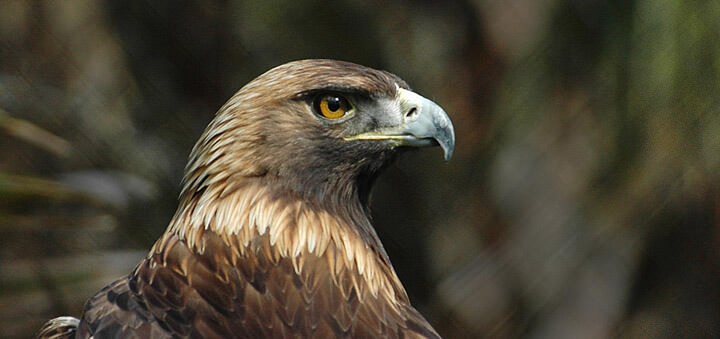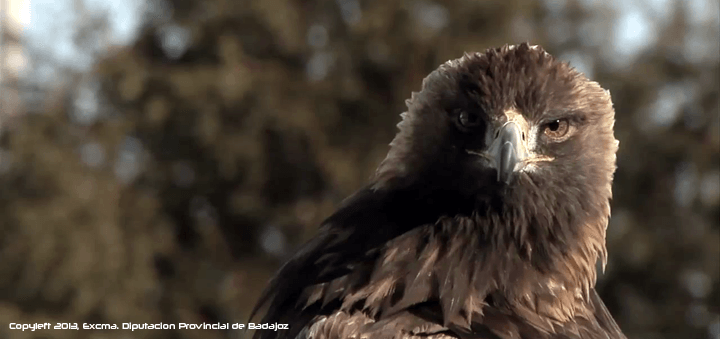Some years ago, at the Palentina Mountain (Spain), I saw a Golden Eagle for the first time. That moment got etched in my memory forever. I was surprised by its strength and its characteristic gracious flight. It is the only eagle that soars with the wings upheld in a V. When hunting and doing its spectacular swoop down, the Golden Eagle can fly up to 3 000 metres and descend with speeds close to 200 km/h. It is therefore not surprising that Red Kites, buzzards, kestrels and Barn Owls are among its preys. I must say that the hallmark of our biggest eagle is its golden colour. As an interesting fact, I will also say that its name in Greek is khrusaetus, which comes from khrusos (gold) y aetos (eagle). In some countries, like France, Italy and Spain, it has been worshipped by many kings through history as a symbol of power and victory: for this reason it is called águila real (royal eagle) in Spanish.
The world Golden Eagle population exceeds 100 000 couples. In Europe there are about 12 000 specimens, divided in two subspecies: The Aquila chrysaetos chrysaetos, which inhabits from France to the Urals, with a greater presence in the UK (440 couples), Scandinavia (2 000 couples), Italy (540 couples), Russia (1000 couples) and Turkey (3 000 couples); and the subspecies Aquila chrysaetos homeyeri, darker and of smaller size, which inhabits throughout the Iberian Peninsula and the north of Africa. Both subspecies are so different from one another that even Linneo made the mistake of classifying them as different species.
The homeyeri subspecies population in Spain was estimated to be about 1 769 couples in 2008, and it is included in the Spanish National Catalogue of Endangered Species and in the IUCN Red List of Threatened Species as Near Threatened.
Every day, these birds of prey overfly territories that can reach 100 km2. This species’ couples are loyal and can build up to five nests in places like cliffs, inaccessible rocks and high pine trees (only a 10 % of them). The female Golden Eagle lays from 1 to 3 eggs, and the breeding season extends from February to August. The juvenile specimens have white spots that don’t disappear until their sixth year of life. They are threatened by the uncontrolled climbing, the illegal hunting, poison and electrocution. They have also been quite affected by the decline of the Wild Rabbit species.
Some conservation initiatives have been implemented for the development of the population of the Golden Eagle in Spain, such as the surveillance of nests or the supplementary feeding in regions like Madrid. The measures foreseen on the recovery plan of 2009 should be implemented as soon as possible, and the cooperation with Portugal should be intensified.
In the rest of Europe the subspecies chrysaetos is less threatened, but it also needs protection measures to prevent its slow decline. Some laws have been established in the UK to prevent the eagles to be disturbed in their nests, and some awareness measures have been carried out, like the bird guide from the Mountaineering Council of Scotland. We hope this measures pay off, so we can keep admiring the gracious flight of the Golden Eagle.













